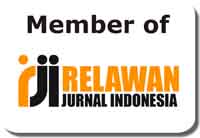Beveragraphy: Revisiting the Typology of Food Writing from the Perspective of Culinary Linguistics
Abstract
Keywords
Full Text:
PDFReferences
Blum-Kulka, S. (1994). The Dynamics of family dinner Talk: Cultural contexts for children’s passages to adult discourse. Research on Language & Social Interaction, 27(1), 1–50. https://doi.org/10.1207/s15327973rlsi2701_1
Blum-Kulka, S. (2012). Dinner Talk Cultural Patterns of Sociability and Socialization in Family Discourse.
Buccini, A. F. (2012). Linguistics and food studies. In Routledge international handbook of food studies (1st ed, pp. 146–158). Routledge.
Delville, M. (2008). Food, poetry, and the aesthetics of consumption: Eating the avant-garde. Routledge.
Gerhardt, C. (2013). Food and language–language and food. In Culinary linguistics: The chef’s special (pp. 3–49). John Benjamins Publishing Company.
Hyland, K. (1998). Persuasion and context: The pragmatics of academic metadiscourse. Journal of Pragmatics, 30(4), 437–455. https://doi.org/10.1016/S0378-2166(98)00009-5
Lew, R. (2011) Space Restrictions in Paper and Electronic Dictionaries and Their
Implications for the Design of Production Dictionaries. In P. Ban´ ski and
B. Wo´ jtowicz (eds.), Issues in Modern Lexicography. Mu¨ nchen: Lincom Europa.
Lillis, T. (2013). Sociolinguistics of writing. Edinburgh University Press.
Mark, M., & Pearson, C. S. (2001). The Hero and the Outlaw: Building Extraordinary Brands Through the Power of Archetypes. McGraw-Hill Professional Publishing. http://public.ebookcentral.proquest.com/choice/publicfullrecord.aspx?p=4654274
Negley, S. C. (2014). The coniunctio gastronomique: Reflections on the process of individuation in culinary terms. Psychological Perspectives, 57(4), 384-402.
Ong, K. K. W., Ghesquière, J. F., & Serwe, S. K. (2013). Frenglish shop signs in Singapore: Creative and novel blending of French and English in the shop fronts of beauty and food businesses in Singapore. English Today, 29(3), 19–25. https://doi.org/10.1017/S0266078413000278
Reiss, K. (2016). Translation criticism, the potentials and limitations: Categories and criteria for translation quality assessment.
Ricoeur, P. (1991). Narrative Identity. Philosophy Today, 35(1), 73–81. https://doi.org/10.5840/philtoday199135136
Rosner, H., & Hesser, A. (2012). Journalism. In Routledge international handbook of food studies (1st ed, pp. 89–100). Routledge.
Salmons, K. (2017). Food in the Novels of Joseph Conrad Eating as Narrative. Springer International Publishing :Imprint: Palgrave Macmillan. https://link.springer.com/book/10.1007/978-3-319-56623-8
Spradley, J. P. (2016). Participant observation. Waveland Press.
Srinivas, T. (2013). “As Mother Made It”: The Cosmopolitan Indian Family, “Authentic” Food, and the Construction of Cultural Utopia. In Food and culture: A reader (3rd ed, pp. 355–375). Routledge.
DOI: http://dx.doi.org/10.31332/lkw.v0i0.4154
Copyright (c) 2022 Yustin Sartika, Luthfie Arguby Purnomo, Lilik Untari, Lukfianka Sanjaya Purnama

This work is licensed under a Creative Commons Attribution-ShareAlike 4.0 International License.
Langkawi: Journal of The Association for Arabic and English indexed by:


















.png)
.png)

.png)
2.png)








